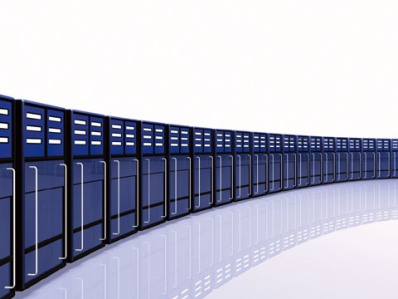Nlyte: DCIM, what is it?
August 2011 by Grant Bilbow, le CEO de nlyte
Data Centre Infrastructure Management is the monitoring, measurement, management and/or control of the performance, utilisation and energy consumption in the data centre as it relates to the IT equipment and IT-related equipment. This includes all computer assets such as servers, storage and network switches plus associated infrastructure components such as PDUs and air conditioning devices. It brings together the best of systems performance management, building management and energy management systems and applies them to data centre infrastructures.
© AridOcean
DCIM enables data centre managers and everyone else interested in them to see and manage exactly what’s happening in the data centre at all times and to drive the highest and most effective levels of performance. More than half of data centre managers don’t know the environmental impact of their own data centres and many of those who do are not able to measure it effectively on a day to day basis.
We also believe that those delivering outsourced, co-located and cloud-based data centre services need to be seen as leaders in this area. Too many have said that power and carbon management are not a high priority for them because it’s all paid for by their customers and too many customers have said that it’s not their problem because their supplier manages it. It seems that the drive to greater energy efficiency falls in the middle in this scenario with no-one taking responsibility for it.
We know of one organisation which built a new data centre and subsequently found that the floor was not capable of taking the weight of all the data centre assets. It cost them over £1m and a year to rectify the mistake. If they had been using a DCIM solution at the time, they would have had immediate access to this information at the planning stage and prevented a costly error. DCIM can speed up the process of planning a data centre migration because the solution already holds completely up-to-date information on all the assets an organisation has in its current data centres as well as understanding all the associated power and cooling dependencies.
At the same time, users can visualise and model the set-up of their new data centre to establish the most effective layout. DCIM can help them to predict future requirements and growth rates for the new data centre using historical data gathered from information held about current practices.
The solution can also help prevent mistakes and delays in the execution of projects (such as planned moves, adds and changes) through the introduction of a process-based approach, for example introducing ITIL™-based change management principles.
What impact is virtualisation having on the data centre in terms of DCIM?
Virtualisation enables users to separate workloads and data from the physical infrastructure and to get more from what they already have. However, we speak to many organisations who are struggling to effectively manage and track their day to day virtualised environments and are concerned about the operational risk of not having a clear picture of what’s going on.
Few organisations seem to have thought about the risk caused to the business when they have applications running untracked across virtual servers (in the event of a power outage for example). A good DCIM tool can track virtual machines and the applications running on them in real-time and give users the knowledge they need to manage on a day to day basis and plan for all contingencies.
What about the Cloud on DCIM moving forwards?
Providers of external and internal cloud services and customers of cloud providers should be looking hard at how they manage their cloud environments. The flexibility of the Cloud is attractive, but we see organisations rushing to use cloud-based applications without thinking about how they or their suppliers will manage and track applications, data, infrastructure and services on a day to day basis.
In addition, there seems to be little thought about how future requirements and growth will be or can be managed at an individual cloud customer level. Cloud by its very nature is distributed across many different domains both physically and virtually. As its adoption grows, we see a scenario where thousands of organisations will be sharing thousands of cloud applications with each wanting their own management, reporting and usage-based charging. The ability to provide this level of management is an essential characteristic of cloud computing – an environment which cries out for DCIM.
In addition, DCIM has a role in helping organisations which are planning to migrate to the cloud to assess their requirements at a granular level before making the move, cutting the risk of not getting it right.







 News
News




